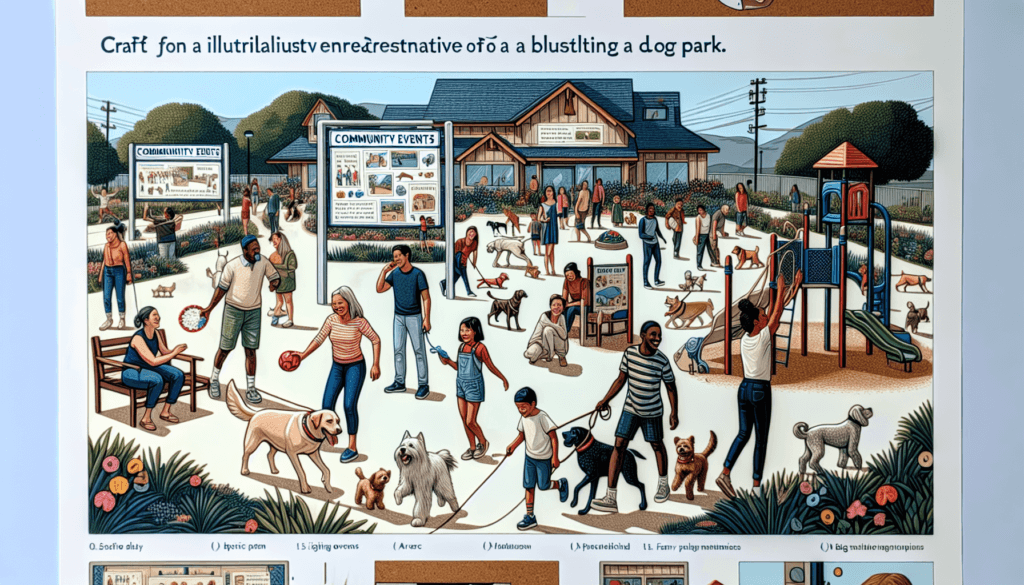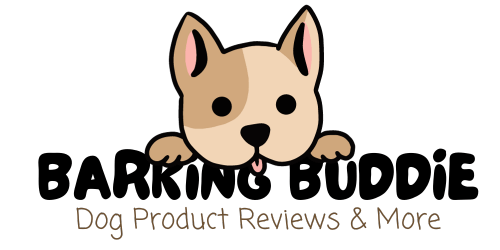Imagine strolling into your local dog park, the air filled with the excited barks and playful yelps of dogs running freely. As you observe the furry friends frolicking and their humans chatting amiably, you can’t help but feel a sense of belonging in this vibrant community. But have you ever wondered what makes some dog parks stand out as true hubs of connection and camaraderie? In this article, we will explore practical tips and insightful strategies on how to foster a strong sense of community in your dog park, creating a space where dogs and their owners can thrive together harmoniously. So, grab a leash and let’s embark on this journey of creating a tight-knit dog park community!
Creating a Welcoming Environment
Maintaining a Clean and Safe Space
Creating a welcoming environment in your dog park starts with maintaining a clean and safe space for both dogs and their owners. Regular cleaning and maintenance are crucial to ensuring a pleasant experience for everyone who visits the park. This includes regularly removing any trash or debris, as well as regularly inspecting and repairing any damaged equipment or fencing. By keeping the park clean and well-maintained, you are sending a clear message that this is a place where people and their furry friends can feel comfortable and safe.
Providing Adequate Facilities
One of the key aspects of creating a welcoming environment is providing adequate facilities for both dogs and their owners. This can include amenities such as poop bag dispensers and waste stations throughout the park to encourage responsible pet ownership. It is also important to have convenient water stations and rest areas for both dogs and owners to take a break and stay hydrated. By ensuring that these facilities are well-maintained and easily accessible, you are making it easier for dog owners to take care of their pets while enjoying the park.
Encouraging Responsible Pet Ownership
Another important element of creating a welcoming environment is encouraging responsible pet ownership within the dog park. This can be achieved through educational initiatives that promote proper dog etiquette and help owners understand canine behavior. Organizing workshops and training sessions can provide valuable information and resources to help owners develop a better understanding of their pets. By promoting responsible pet ownership, you are fostering a sense of community by ensuring that all dogs and owners can coexist harmoniously in the park.
Organizing Community Events
Hosting Regular Meetups
Organizing regular meetups in your dog park is a great way to bring the community together, allowing dogs and their owners to socialize and make new friends. These meetups can be as simple as setting a date and time for people to come to the park and let their dogs play together. You can even encourage participants to bring snacks and treats to share, creating a friendly and inclusive atmosphere. By hosting regular meetups, you are not only promoting socialization among dogs but also fostering human connections and building a strong sense of community within the park.
Organizing Workshops and Training Sessions
In addition to hosting regular meetups, organizing workshops and training sessions can provide valuable resources and education for dog owners in your community. These sessions can cover a wide range of topics, from basic obedience training to more advanced skills. Bringing in professional trainers or guest speakers can help provide expert guidance and support to dog owners who may be facing challenges with their pets. By organizing these educational events, you are offering a platform for learning and growth, while also strengthening the sense of community within your dog park.
Arranging Fundraising Events
Arranging fundraising events is another way to engage the community and support the ongoing maintenance and improvement of your dog park. These events can be fun and engaging, such as dog-themed bake sales, charity walks, or contests. By involving the community in fundraising activities, you are fostering a sense of ownership and pride in the park. The funds raised can be used to upgrade facilities, install new amenities, or support community initiatives. By arranging fundraising events, you are showcasing the collaborative spirit of the dog park community and making a positive impact on both the park and its visitors.

Promoting Communication and Engagement
Establishing a Social Media Presence
In today’s digital age, establishing a social media presence is a powerful tool for promoting communication and engagement within your dog park community. By creating social media accounts dedicated to your park, you can share updates, news, and important information with park visitors. This platform also allows visitors to connect and share their experiences, stories, and photos. By actively responding to comments and messages, you can foster a sense of inclusion and make visitors feel valued. Social media can be a powerful tool to keep the community informed and engaged, ultimately strengthening the bond between dog owners and the park.
Creating a Community Bulletin Board
Creating a community bulletin board within the dog park is another effective way to promote communication and engagement among visitors. This physical board can serve as a central hub for sharing essential information, such as upcoming events, lost and found notices, and local resources. Encouraging visitors to post their own messages, recommendations, or useful tips can foster a sense of belonging and shared ownership. By providing a space for communication, you are promoting a more connected and engaged community within your dog park.
Encouraging Information Sharing
In addition to establishing a social media presence and creating a community bulletin board, it is important to encourage information sharing among dog owners within the park. This can be done through informal conversations, as well as organized events such as informal meetups or coffee mornings. By facilitating a culture of sharing, you are creating opportunities for visitors to exchange knowledge, experiences, and advice. This exchange of information can help to support responsible pet ownership, as well as foster a sense of community and camaraderie among visitors.
Encouraging Positive Interactions
Promoting Proper Dog Etiquette
Encouraging positive interactions within your dog park starts with promoting proper dog etiquette among owners. Educating owners on the importance of leash control, appropriate interaction between dogs, and how to recognize and manage signs of aggression or discomfort is essential. Promoting a culture of respect and responsibility not only ensures the safety and well-being of all dogs in the park but also contributes to a positive and harmonious environment. By actively promoting proper dog etiquette, you are setting the tone for a friendly and inclusive community in your dog park.
Educating Owners about Canine Behavior
Alongside promoting proper dog etiquette, it is important to educate owners about canine behavior to enhance their understanding and ability to respond appropriately. Organizing educational seminars or inviting guest speakers who specialize in dog behavior can provide valuable insights to owners. Learning about the body language, communication cues, and needs of their dogs can help owners create a more enjoyable and stress-free experience for their pets within the park. By educating owners about canine behavior, you are empowering them to be more responsive and supportive guardians, ultimately enhancing the overall atmosphere in the park.
Organizing Playgroups
Organizing playgroups within your dog park is an excellent way to encourage positive interactions and socialization among dogs. These playgroups can be organized based on dog size, age, or specific interests. The benefits of playgroups extend beyond the dogs themselves, as they provide an opportunity for owners to connect and build relationships. Creating a supportive and inclusive environment where playgroups can form naturally fosters a sense of community within the park. By organizing and facilitating these playgroups, you are actively promoting positive interactions and socialization, enhancing the overall experience for both dogs and their owners.

Involving the Local Community
Collaborating with Local Businesses
Involving the local community is key to fostering a sense of community in your dog park. One way to achieve this is by collaborating with local businesses. Reach out to nearby pet stores, veterinary clinics, or training centers and explore opportunities for partnership. This can include offering discounts or exclusive promotions to dog park visitors, organizing joint events or workshops, or even hosting pop-up shops within the park. By collaborating with local businesses, you not only provide added value to park visitors but also effectively integrate the dog park into the larger community.
Partnering with Animal Shelters and Rescues
Partnering with animal shelters and rescues is another meaningful way to involve the local community and make a positive impact. Many shelters and rescues have dogs that need extra exercise, socialization, or exposure to potential adopters. By coordinating with these organizations, you can arrange for shelter dogs to visit the park for playdates or adoption events. Not only does this provide valuable opportunities for the shelter animals, but it also brings in new visitors to the park who may not have previously been aware of its existence. By partnering with animal shelters and rescues, you are actively contributing to the well-being of dogs in need and increasing awareness of your dog park within the local community.
Engaging in Community Services
Engaging in community services is a powerful way to make a positive impact beyond the confines of your dog park. Consider organizing volunteer events where park visitors can come together to clean up local parks, walk shelter dogs, or assist in pet adoption events. By actively engaging in community service, you are not only fostering a spirit of giving back but also creating opportunities for dog park visitors to connect and bond over shared values. Taking part in community services is a direct and meaningful way to strengthen the sense of community within your dog park and extend its reach to the wider local community.
Creating Guidelines and Rules
Establishing Clear Policies
Creating guidelines and rules is essential for maintaining order and ensuring the safety of everyone who visits the dog park. Establish clear policies that outline expectations for dog behavior, leash requirements, waste disposal, and any other pertinent rules specific to your park. Make these policies easily accessible to visitors through signage or online resources to ensure every park visitor is aware of the expectations. Clear policies foster a more harmonious and enjoyable experience for all park users, as they provide a framework for appropriate behavior and responsible dog ownership.
Encouraging Responsible Dog Ownership
In addition to establishing clear policies, it is important to actively encourage responsible dog ownership within your park. This can be achieved through educational initiatives, such as distributing informational brochures or holding orientation sessions for new park visitors. Emphasize the importance of vaccinations, licensing, and regular vet check-ups to ensure the health and well-being of all dogs in the park. By encouraging responsible dog ownership, you create a community of educated and responsible dog owners who contribute to the overall success and safety of the park.
Enforcing Park Regulations
Establishing rules and policies is only effective if they are consistently enforced. Train park staff or volunteers on the importance of enforcing regulations in a fair and respectful manner. Consistent enforcement of park regulations helps create a safe and welcoming environment for all park visitors. In the event of any conflicts or violations, promptly address the situation and communicate the reasons behind the enforcement actions. By enforcing park regulations in a fair and consistent manner, you maintain the integrity of the park environment and ensure that everyone feels comfortable and respected while visiting.

Providing Resources and Amenities
Installing Waste Stations and Dispensers
Providing resources and amenities is crucial for maintaining a clean and well-maintained dog park. Installing waste stations and dispensers strategically throughout the park ensures that pet owners have convenient access to necessary supplies for waste disposal. These stations should be stocked with bags that are easily accessible and regularly replenished. Clearly labeled garbage bins should also be available for proper disposal. By providing waste stations and dispensers, you encourage responsible pet ownership and contribute to the cleanliness and overall attractiveness of the park.
Offering Water Stations and Rest Areas
Water stations and rest areas are essential amenities that contribute to the comfort and well-being of both dogs and their owners. Dogs can easily become dehydrated during play and exercise, so having water stations within the park is important. These stations should be designed to accommodate multiple dogs at once and should be cleaned and sanitized regularly. Rest areas, such as shaded benches or designated seating areas, provide a space for owners to relax while keeping an eye on their pets. By offering these amenities, you create a welcoming environment that prioritizes the needs and comfort of both dogs and their owners.
Providing Dog Agility Equipment
Providing dog agility equipment within your dog park is an excellent addition that can enhance the physical and mental stimulation for dogs. Consider installing obstacles such as tunnels, jumps, or ramps that allow dogs to challenge themselves physically and mentally. These structures should be sturdy and safe for use by all sizes and breeds of dogs. Dog agility equipment not only provides additional enrichment for dogs but also encourages physical activity and engagement among owners. By providing these resources, you foster a more dynamic and engaging environment within your dog park.
Maintaining a Supportive Network
Nurturing Relationships between Members
Maintaining a supportive network within your dog park community requires nurturing relationships between members. Encourage visitors to interact with one another, share experiences, and offer support and advice. Foster a culture of inclusivity and respect, where all members feel comfortable and welcomed. Organize social events or gatherings outside of the park to allow members to connect on a deeper level. By nurturing relationships between members, you create a supportive network that encourages camaraderie and cooperation within your dog park community.
Establishing a Volunteer Program
Establishing a volunteer program is a great way to engage members of the community who are passionate about dogs and the park. Encourage park visitors to get involved in various capacities, such as organizing events, assisting with maintenance tasks, or leading educational workshops. By establishing a volunteer program, you create opportunities for members to contribute and take ownership of the park, strengthening their sense of belonging and investment. Volunteers can play a crucial role in maintaining the park’s cleanliness, organizing events, and ensuring a positive experience for all visitors.
Facilitating Peer-to-Peer Support
Within your dog park community, facilitate peer-to-peer support by creating platforms or opportunities for members to connect. This can be done through online forums, social media groups, or even designated times within the park for members to gather and exchange knowledge and advice. Encourage experienced dog owners to mentor new visitors, offering support and guidance as needed. By facilitating peer-to-peer support, you create a strong support system within the community, allowing members to learn from one another and develop lasting friendships.

Increasing Awareness and Membership
Hosting Open House Events
Hosting open house events is an effective way to increase awareness and attract new members to your dog park. Open house events provide an opportunity for the local community to explore the park, learn about its amenities, and engage with current members. Consider organizing guided tours, interactive games, or demonstrations during these events to showcase the park’s unique features. By hosting open house events, you create a welcoming and inclusive atmosphere that encourages new visitors to become part of the dog park community.
Promoting the Park in Local Media
Promoting your dog park in local media channels can significantly increase awareness and membership. Reach out to local newspapers, radio stations, or online community forums to share stories, upcoming events, or success stories from the park. Highlight any unique features or initiatives that set your park apart from others. Additionally, consider partnering with local influencers or bloggers who can share their positive experiences and reach a wider audience. By promoting the park in local media, you generate interest and curiosity among the local community, ultimately attracting new members to your dog park.
Collaborating with Pet-Related Businesses
Collaborating with pet-related businesses in your area can help increase awareness and membership for your dog park. Establish partnerships with local pet stores, grooming salons, or veterinary clinics to cross-promote each other’s services and facilities. Offer joint promotions or exclusive discounts to customers who visit the dog park or patronize these businesses. By collaborating with pet-related businesses, you tap into an existing customer base and gain exposure to potential new members who share a common interest in dogs. These partnerships benefit both parties and help to build a stronger and more connected dog park community.
Continued Engagement and Improvement
Seeking Feedback from Park Users
Continued engagement and improvement in your dog park require actively seeking feedback from park users. Provide multiple channels for visitors to share their experiences, suggestions, or concerns, such as feedback boxes or online surveys. Regularly review and analyze the feedback received, identifying common themes or areas for improvement. Actively respond to feedback, communicating any changes or improvements implemented as a result. By seeking feedback, you demonstrate a commitment to improving the park based on the needs and preferences of its users and strengthen the sense of community ownership within the park.
Implementing Suggestions for Enhancements
When seeking feedback, be open to suggestions for enhancements and improvements within the park. Actively evaluate the feasibility and impact of these suggestions and, if viable, implement them to enhance the visitor experience. This could include adding new amenities, adjusting park policies, or organizing different types of events based on the community’s interests. By implementing suggestions, you show that the park is responsive to the needs of its users and actively working to create a better space for everyone. In turn, this fosters a stronger sense of community and pride in the park.
Evaluating the Park’s Performance
Continued engagement and improvement also necessitate evaluating the park’s overall performance on an ongoing basis. Regularly assess various aspects of the park, such as cleanliness, maintenance, facilities, and visitor satisfaction. Use this information to identify areas that may require additional attention or resources. Collaborate with staff, volunteers, and park visitors to develop action plans and strategies for addressing any areas of improvement. By conducting regular evaluations, you ensure that the park remains a vibrant and welcoming community space that meets the evolving needs and expectations of its visitors.
In conclusion, creating a welcoming and thriving community within your dog park requires a comprehensive approach that encompasses various aspects of park management and engagement. By maintaining a clean and safe space, providing adequate facilities, and encouraging responsible pet ownership, you set the foundation for a positive environment. Organizing community events, promoting communication and engagement, and encouraging positive interactions further strengthen the sense of community within the park. Involving the local community, establishing guidelines and rules, providing resources and amenities, and maintaining a supportive network contribute to the overall success of the dog park. Increasing awareness and membership, continued engagement, and constant improvement ensure that the park remains a vibrant and cherished community space. By following these guidelines and implementing these strategies, you can foster a strong sense of community in your dog park and create a space that is truly inclusive, welcoming, and enjoyable for both dogs and their owners.



